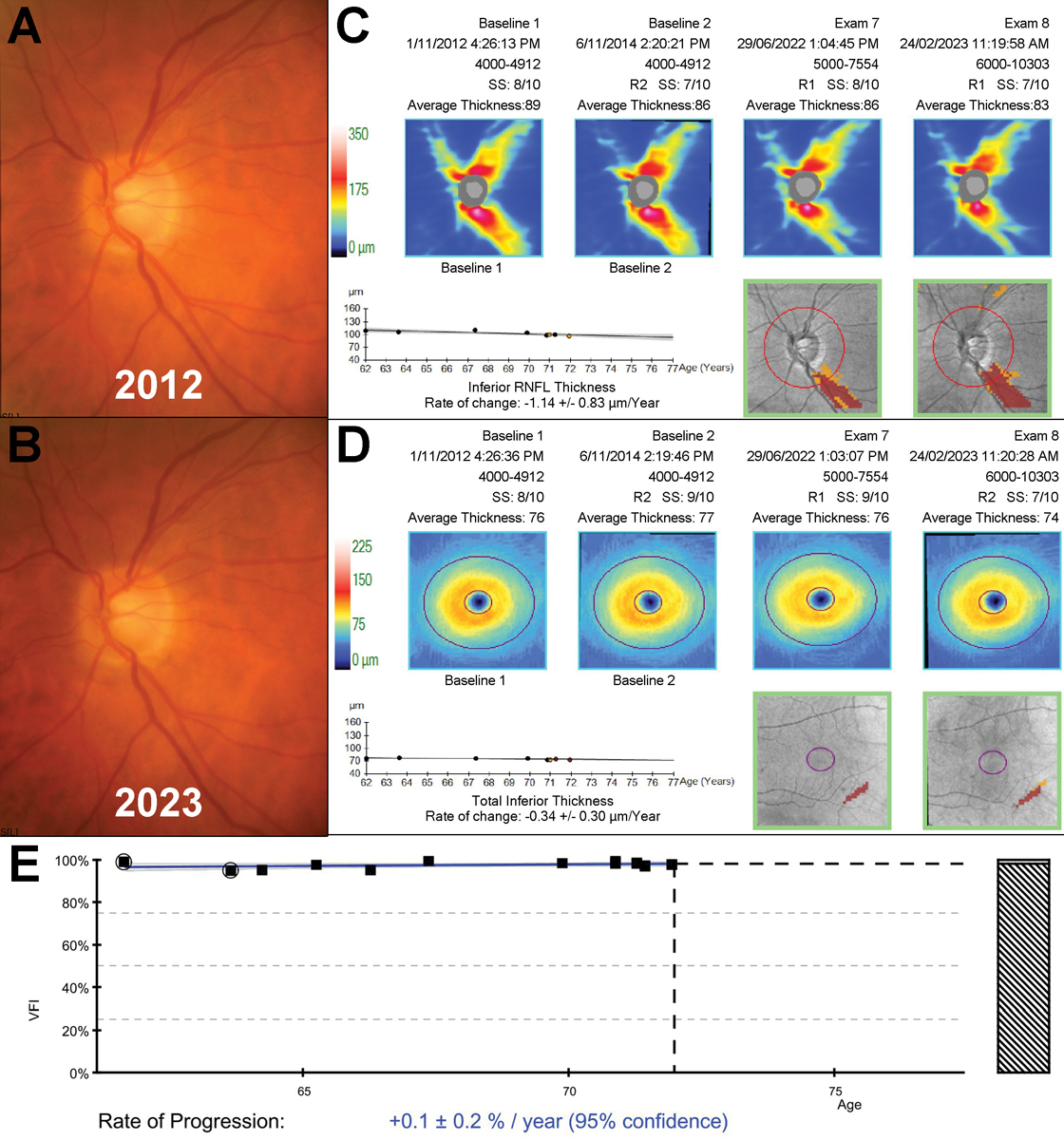 |
|
Despite a high prevalence of NTG in primary aldosteronism patients, the elevated risk was not mediated by blood pressure. Shown here is an example of slowly progressive NTG in a 72-year-old patient monitored over an 11-year period. A to B: Fundus photographs showed subtle thinning of the inferior neuroretinal rim between 2012 and 2023. C to D: Structural progression analyses showed slow inferior thinning on both the RNFL and ganglion cell-inner plexiform layer printouts. E: VF index progression analysis showed no evidence of associated functional deterioration. Photo: Henrietta Wang, BOptom, BSc, and Jack Phu, OD, PhD. Click image to enlarge. |
Primary aldosteronism occurs when the adrenal glands produce too much aldosterone, the hormone that regulates potassium and sodium in the body. Aldosterone overproduction causes the body to retain more sodium and lose potassium, which leads to elevated blood pressure. Patients with this condition are at increased risk of heart disease and stroke. Researchers in Japan thought it was important to investigate the relationship between primary aldosteronism and open-angle glaucoma, especially normal-tension glaucoma (NTG). Their recent study, published in American Journal of Ophthalmology, determined a high prevalence of NTG in primary aldosteronism patients; however, the elevated risk was not mediated by blood pressure.
Newly diagnosed patients with primary aldosteronism (n=212) were evaluated in this cross-sectional study. NTG prevalence in this cohort was 11.8%. Compared with the hypertensive patients without the condition, the hypertensive patients with primary aldosteronism exhibited a significantly increased NTG prevalence (odds ratio: 4.02). In 72 hypertensive patients without the condition, NTG prevalence was 5.2%. Increased NTG prevalence was associated with age, ranging from 8.8% for those aged 40 to 49, to 37.5% for those aged 70 and older.
The researchers were left to believe that “not only is there a direct effect by aldosterone on cardiovascular or renal disease, but it also has an effect on retinal ganglion cell death and glaucoma.”
Still, the team only analyzed data from Japanese patients, so they noted that their results cannot be directly applied to other ethnic groups.
“The early detection of primary aldosteronism is important, as is the search for the presence or absence of the condition in patients with NTG; collaboration between specialists in different fields is required,” they wrote in their paper.
The study suggested that aldosterone dysregulation might play an increased role in NTG that extends beyond just its effects on blood pressure.
| Click here for journal source. |
Hirooka K, Higashide T, Sakaguchi K, et al. Prevalence of normal-tension glaucoma in patients with primary aldosteronism: Prevalence of NTG in patients with primary aldosteronism. Am J Ophthalmology. September 14, 2024. [Epub ahead of print]. |


